A quick tour of Hayling GC which seems to fly under the radar but I think there is definitely a case for it getting abit more love. I didn’t take many photos so it’s only a brief tour but I think they give you a decent idea of the terrain.
As far as I understand it the original course was a Tom Dunn design which was then drastically redesigned by Tom Simpson after WW2 into the course we see today bar a few small changes here and there. There are a number of fairly obvious Simpson features including approach bunkers hiding dead ground short of greens, semi-obscured fairways/landing areas and a great set of understated yet fun greens.
Onto the course;
1 -The clubhouse is set at the far east of the site with the first and last few holes playing over the flattest ground on the way out to the larger dunes at the western end of the course. The 1st is a mid-length par three playing along the aforementioned flat ground with the first of the obvious deceiving Simpson bunkers hiding the front of the green and making judging the distance to the pin awkward.
2 -The short par 5 second runs out away from the clubhouse towards the beach side of the property, a solid hole that I didn’t see much of due to my golf swing….
3 -The 3
rd is a tempting glimpse into the dunes you will soon encounter. A semi-blind drive through and over the dunes starts a hole that turns right and slightly up to a perched green protected by a lone bunker at the front left.
4 -We then head back towards the clubhouse onto the flat ground again. The drive is cape-esque with the left fairway line obscured to make judging the line difficult, another common Simpson trick. Ideally you want to be up this left side to attack the green which is protected by a nasty bunker front right.
5 -The short par 3 5
th is the start of a great run of holes. A narrow raised green is protected by a lone pot bunker at its front left where the prevailing wind blows from. It’s a common theme at Hayling with a host of bunkers guarding that side (3, 4, 5, 6, 11, 12, 14A, 15, 17 & 18) meaning the ability to shape your ball into the wind is a valuable asset. It appears extremely tough to hit the green at 5 and missing it could lead to some back and forth action. You could maybe draw comparisons to the 2
nd at Dornoch and Troon’s Postage Stamp, lofty praise.
6 -The 6
th is a storming par 4 playing down a slightly hogs back fairway, another common theme before approaching over the remnants of a large man-made water inlet. The area to the left of the fairway was one of the best exmaples of a vast expanse of heather on the course which felt like a great and maybe unique addition to the usual links flora. The long green also showcases another Hayling theme, of being set within a slight gully. Possibly a technique used to help the green hold some water in years gone by?
7 -The par 5 7
th is protected by a both a fantastic green and an imposing WW2 pillbox on the inside of the dogleg! The green has a raised back tier angled from the right very reminiscent of Liphook’s 5
th where Simpson was a member but on a slightly larger and more forgiving scale. I’m sure it could still bite you though.
8 -This was where I finally got around to getting my camera out as the course and weather really warmed up. A short four palyed to an island fairway before heading up and over some of the biggest dunes on the course to the green. The further right you go from the tee risking the wrath of a dangerous pot bunker, the better the view to the flag. Too far right and you’ll miss the fairway and be left with a blind shot over the hill all be it with the best line to the green.
Landing zone;
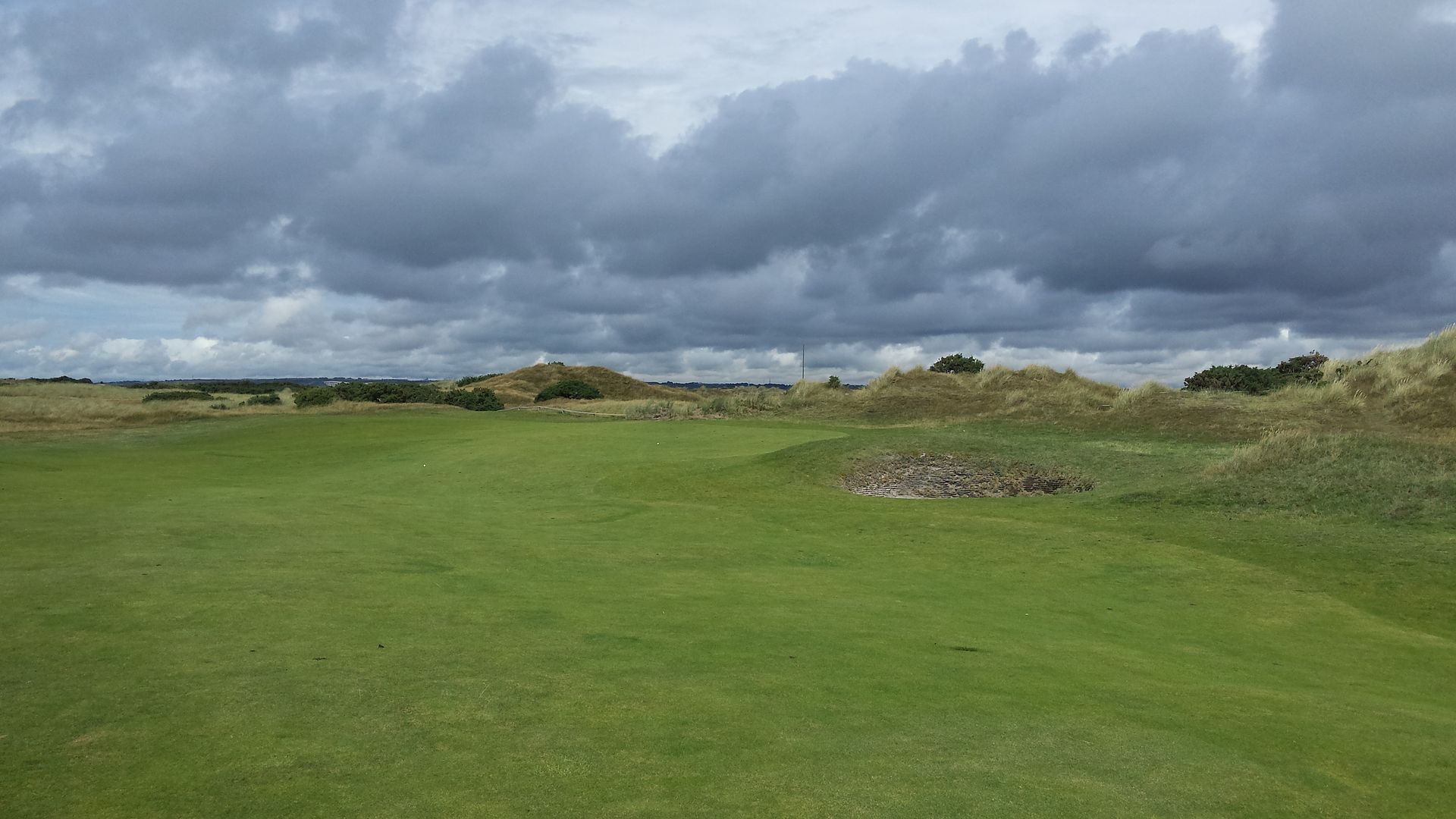
The view from the top of said dunes blocking your view from the right rough;
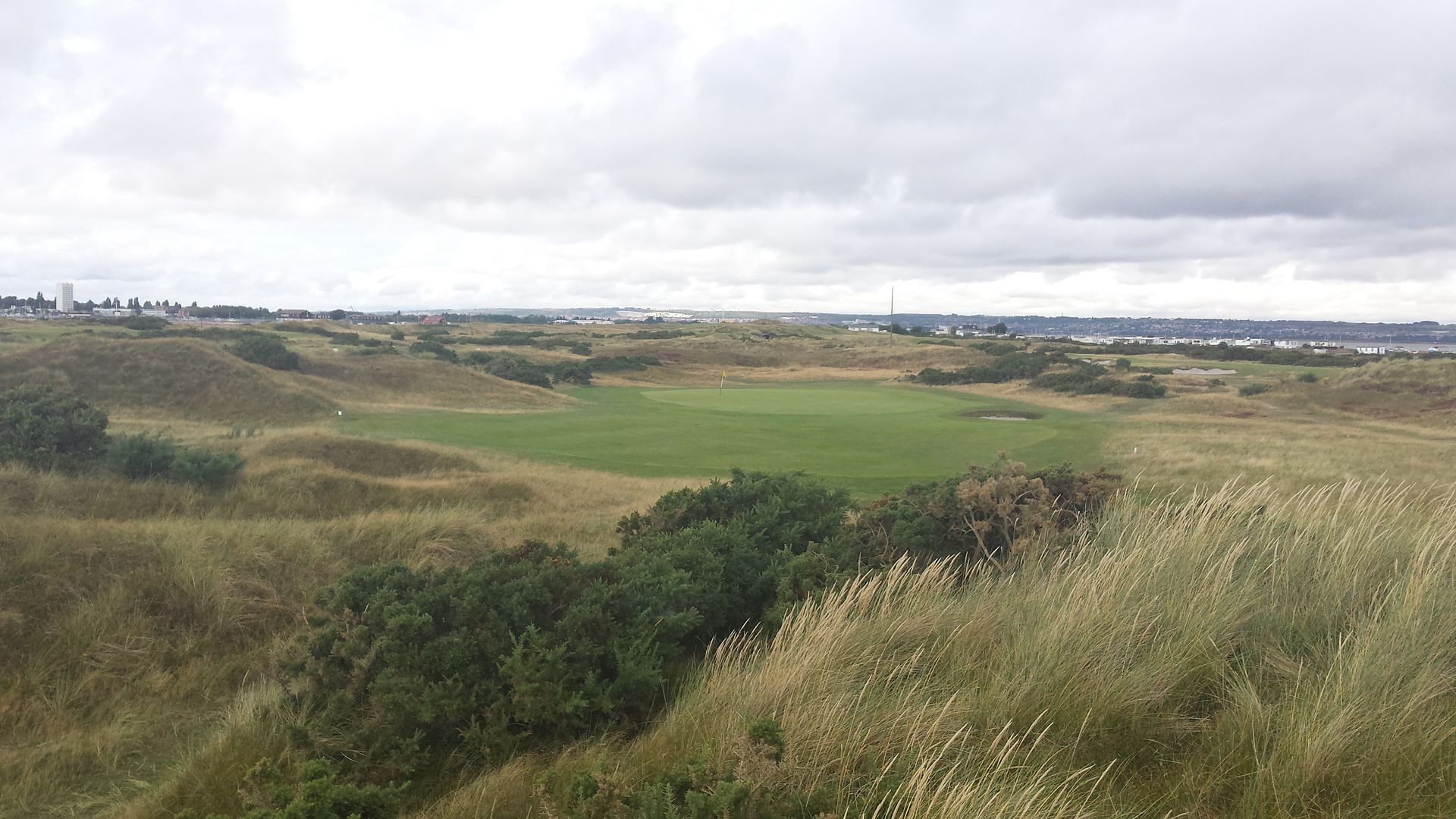
9 -The 9
th is a mid-length par 4 legging left with another cape drive, semi-blind too. Bunkers protect the inside of the dog leg and holding the fairway could be difiicult with is slight hogs back and the prevailing wind knocking balls to the right. Another good green similar to the 6
th, beware of the flag position and club selection as it looks like there could be as much as 3-4 clubs difference between front and back flags.
10 -Short and sweet the 10
th is a cracking driveable par 4. Carry the bunker and/or use the slope to the right to feed the ball into the small but devilish green.
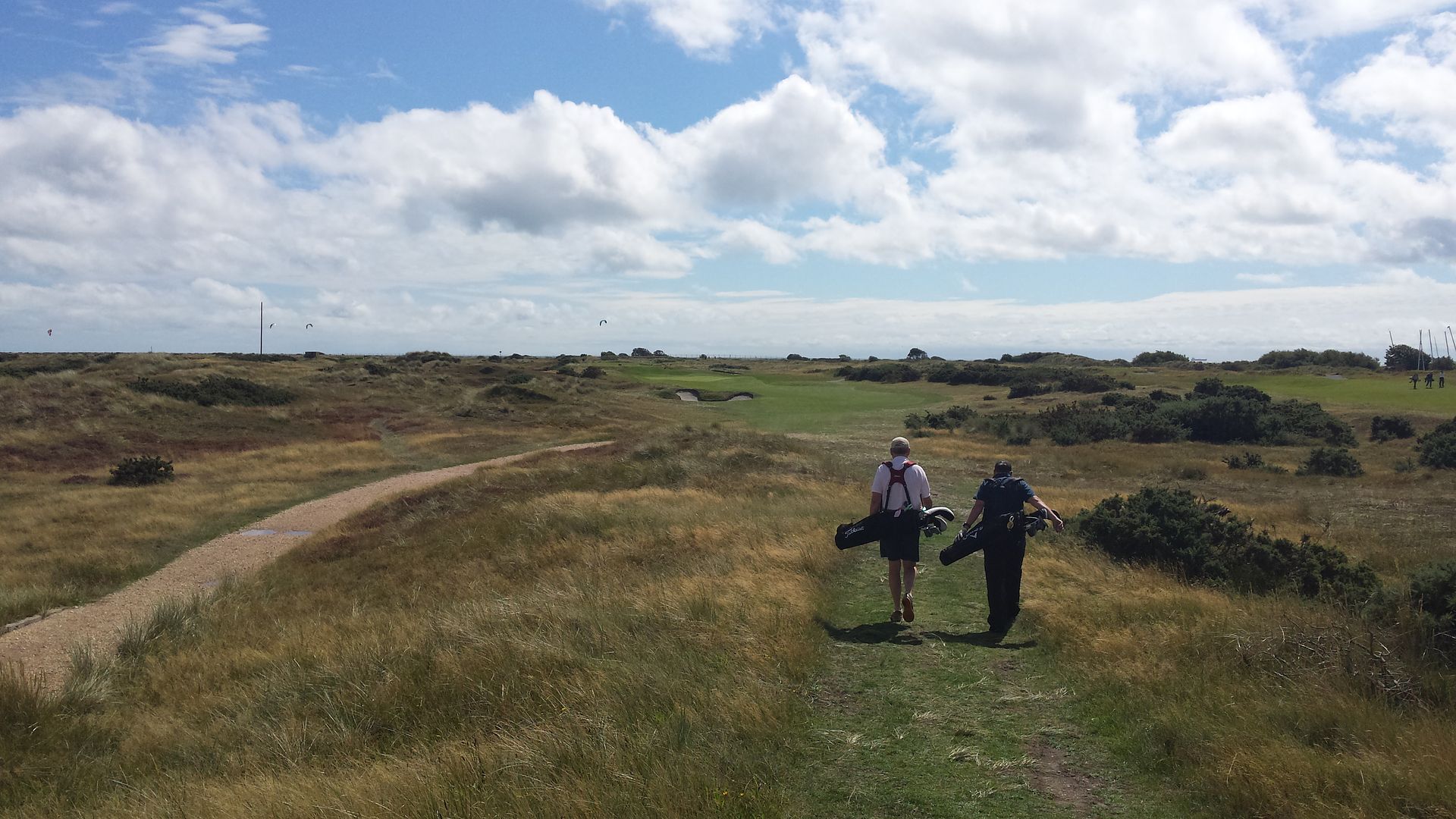
11 -Short and sweet followed by the most defended green on the course. 11 is a stout par 3 surrounded by pot bunkers and exposed to the strong prevailing wind blowing across the hole from the right.
12 -Another cracker. A big drive into a natural valley to another obscured but not totally blind fairway which is rather tight starts the hole. The tight fairways could regarded as one of the faults with the course in its current state. There are numerous spots with obvious areas for expansion to what are likely the original lines that have been left to grow into rough. Down in the fairway you are left with a long approach up to a fantastically sited green tucked into the dunes. Another cool green with little hidden swales that appear as you approach it.
Tee
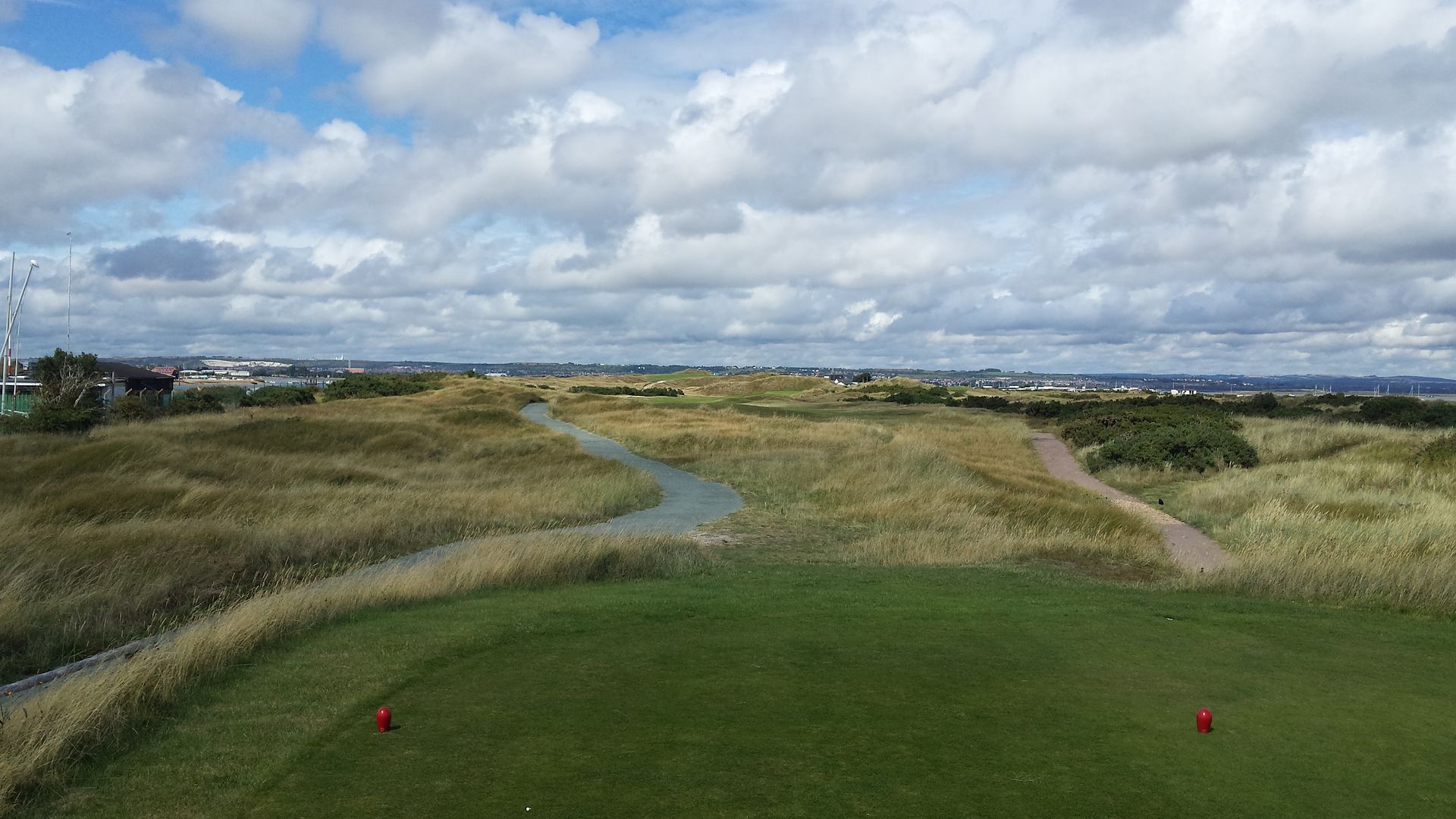
Fairway
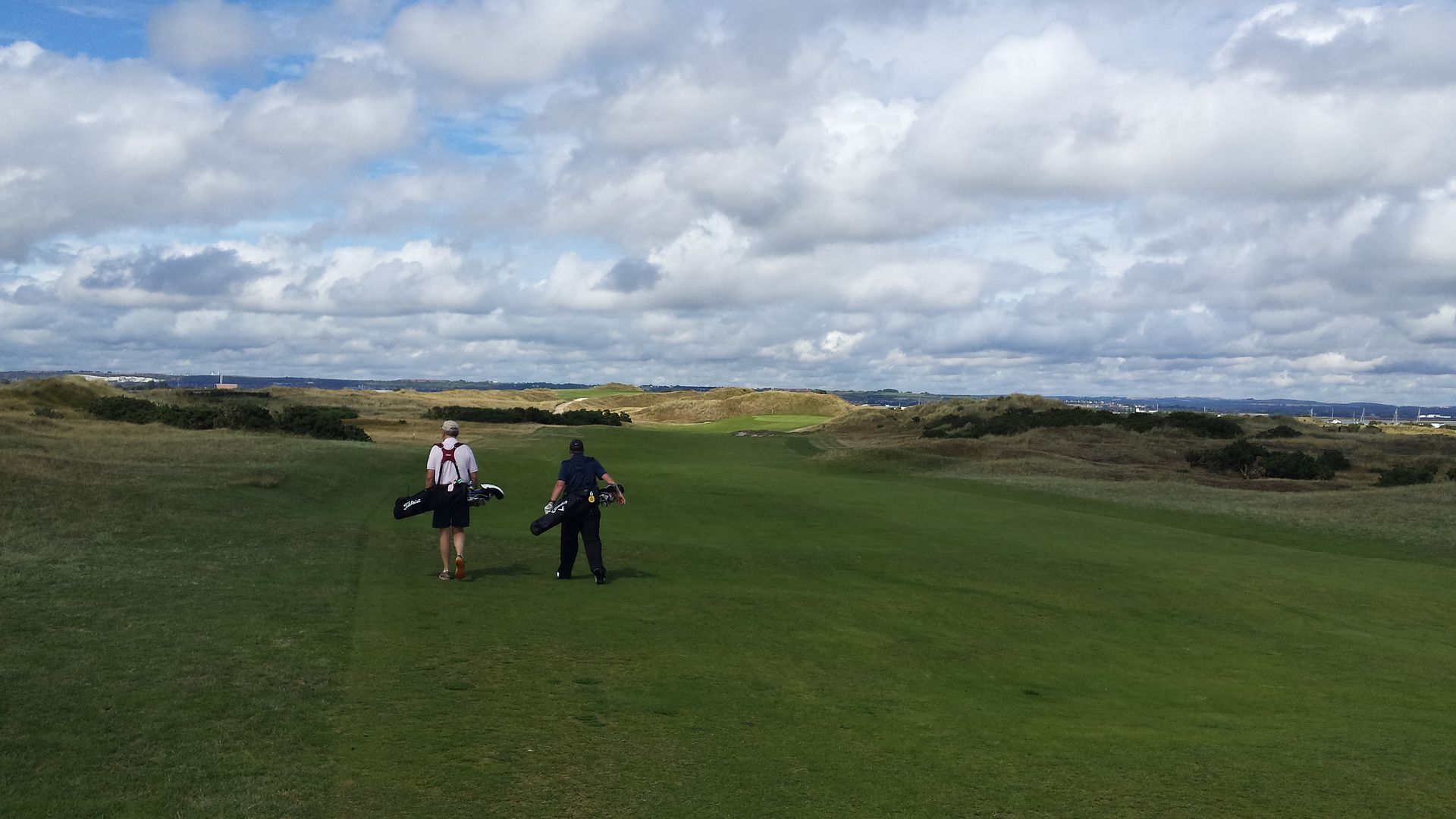
Green;

13 -The 13
th will divide people. The site of the famous Widow bunker which is no longer there, the hole plays up to the top of the dune line to a blind fairway before descending down to the green. Driveable but dangerous I’d like to see the lower right side which is now long rough cut back into fairway as it looks like once was…?
Green from short right;
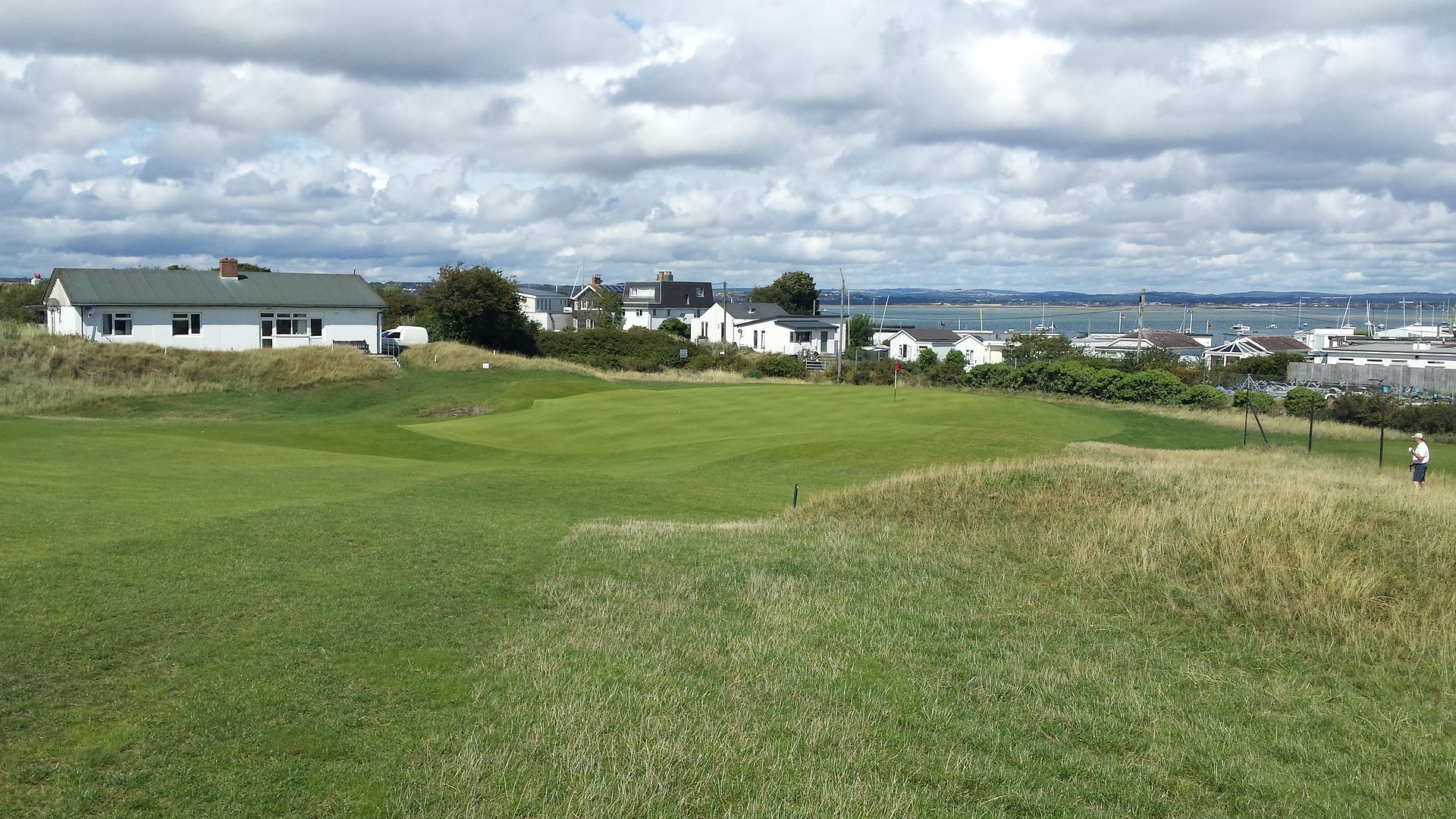
14 -Another pillbox protects the inside of the dogleg on the 14
th along with yet another obscured cape fairway line. Plenty of room to expand this fairway…. The par 5 continues to turn left with a water hazard cutting into the hole. A super green is nestled between low dunes forming another gully/mini punchbowl where the banks can be utilised to your advantage.
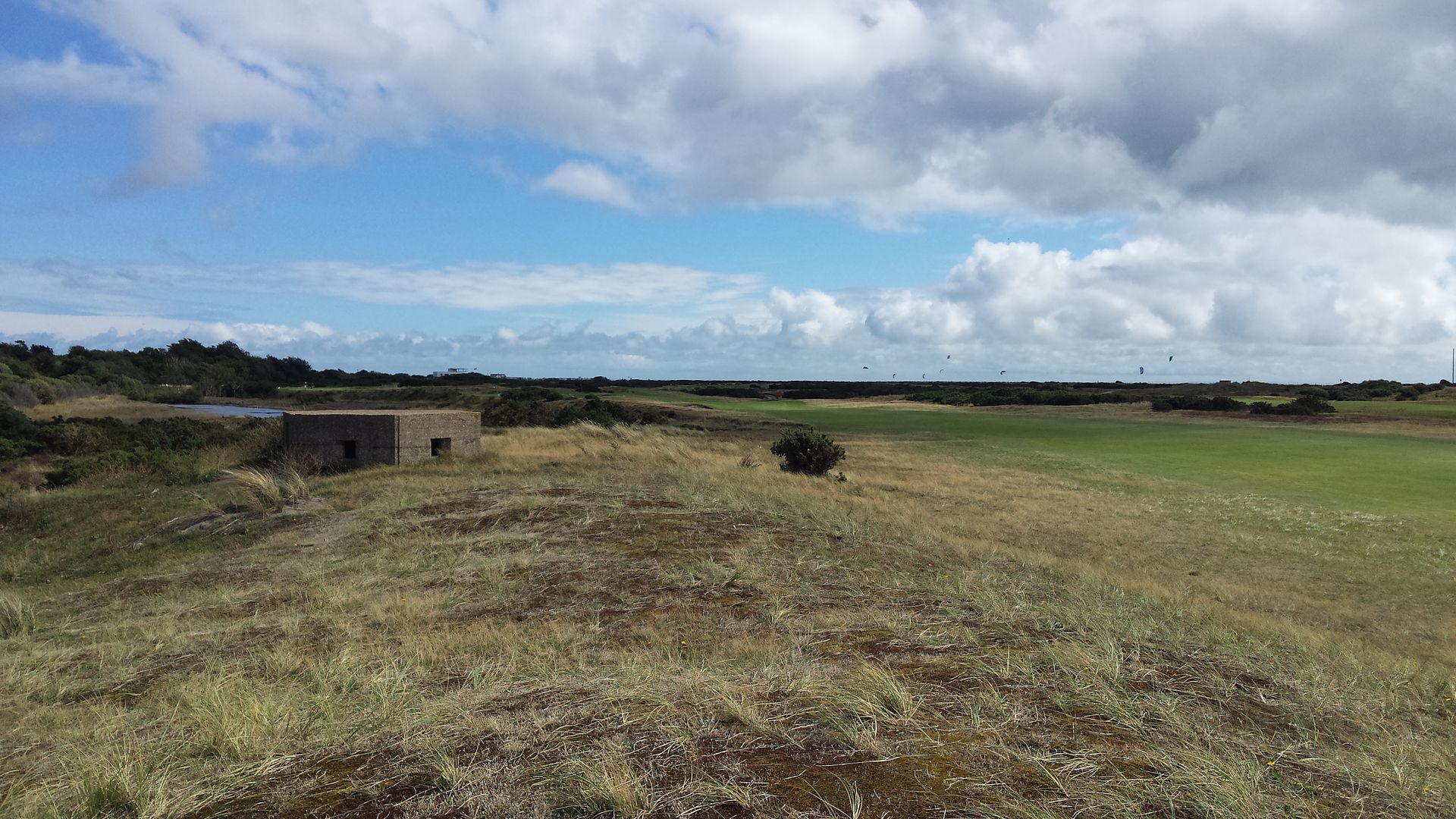
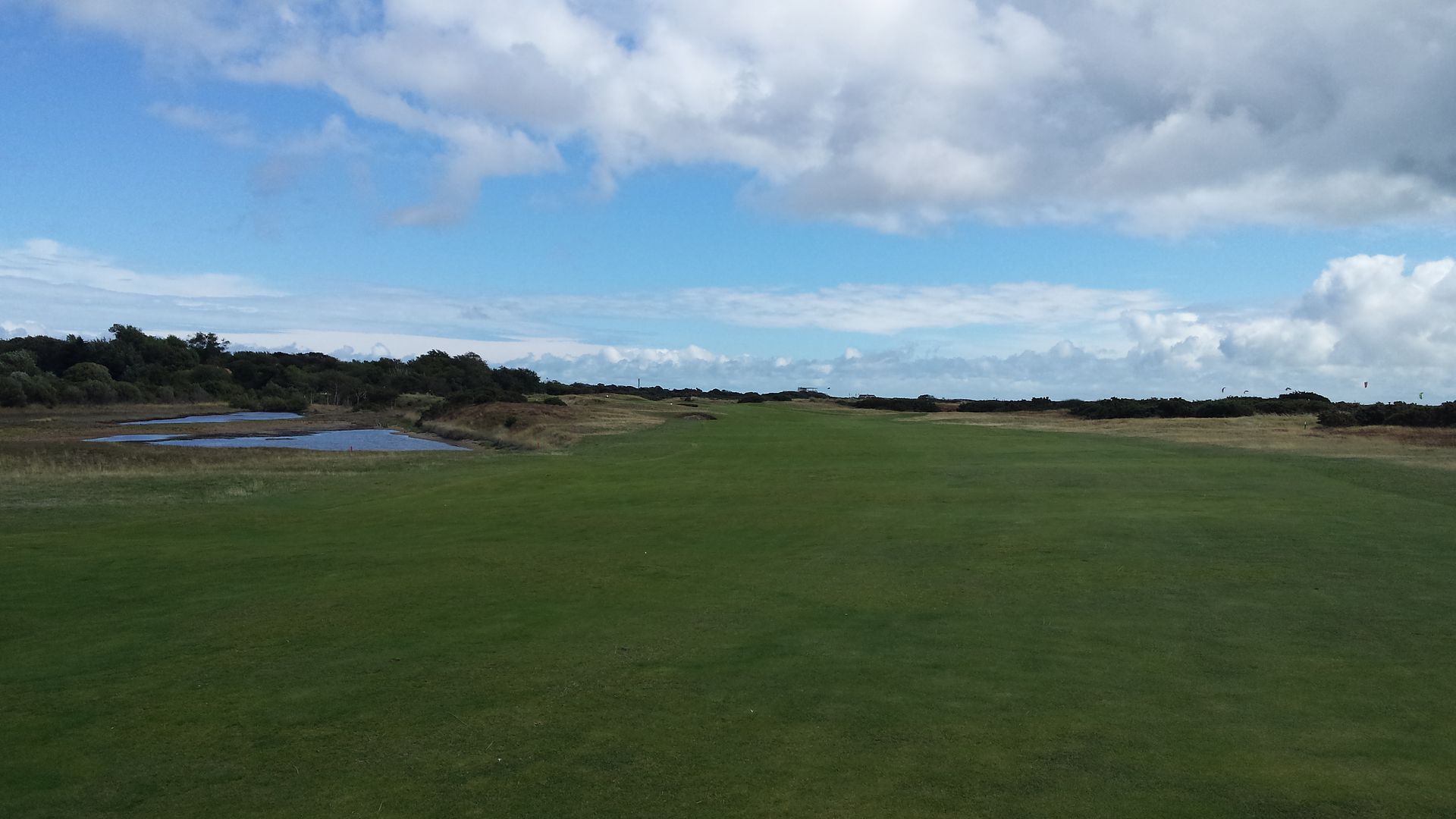
Green from the left;
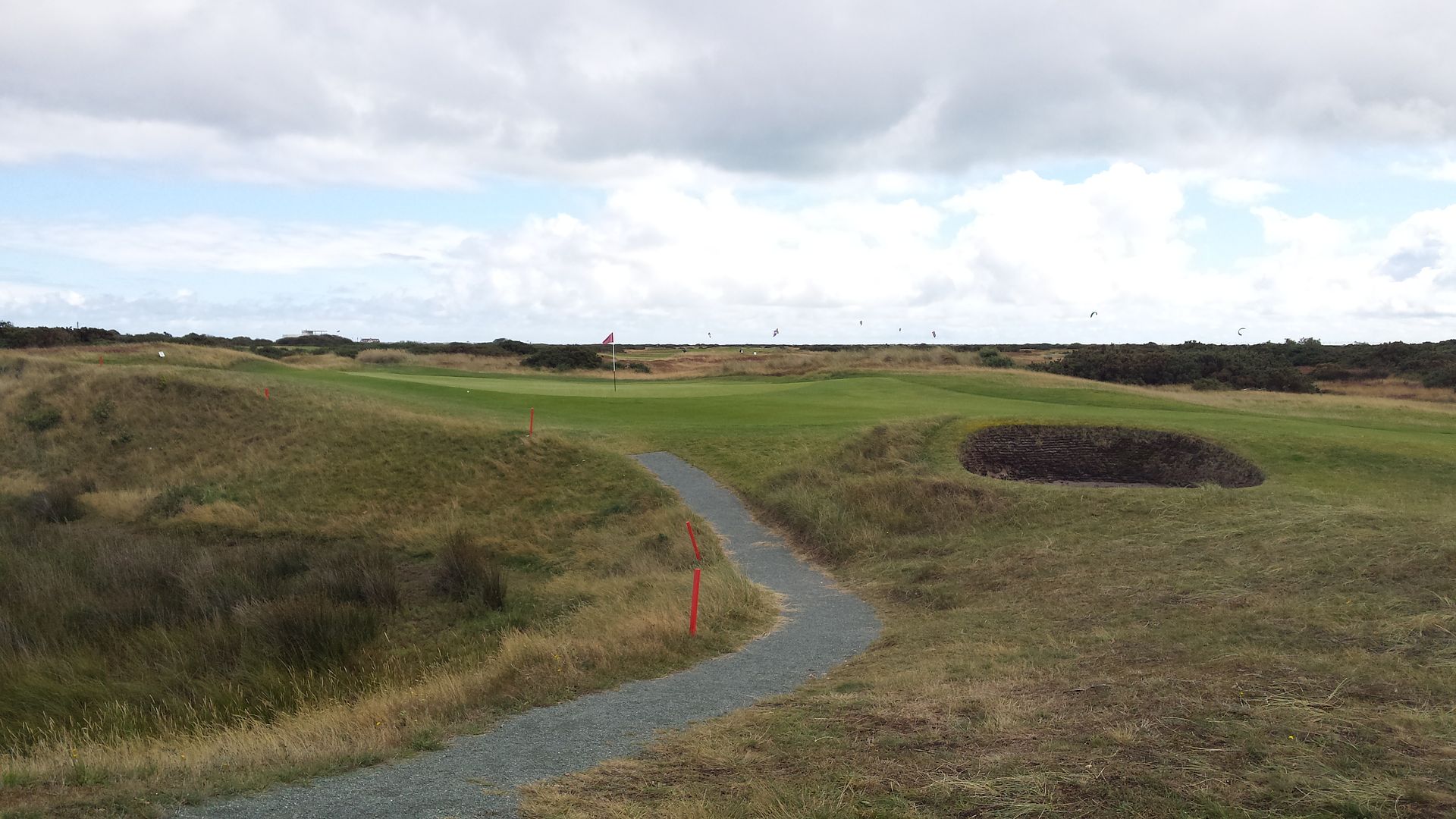
14A -Having walked up to the tee I was pleased to say we were to have the chance to play the courses spare hole, though an original Simpson hole. The par 3 14A plays over the water feature skirting the left of 14 to a well-protected green with bunkers cutting in from left and right. The right tests your control on the prevailing wind…again.
Leaving the front of the tee;
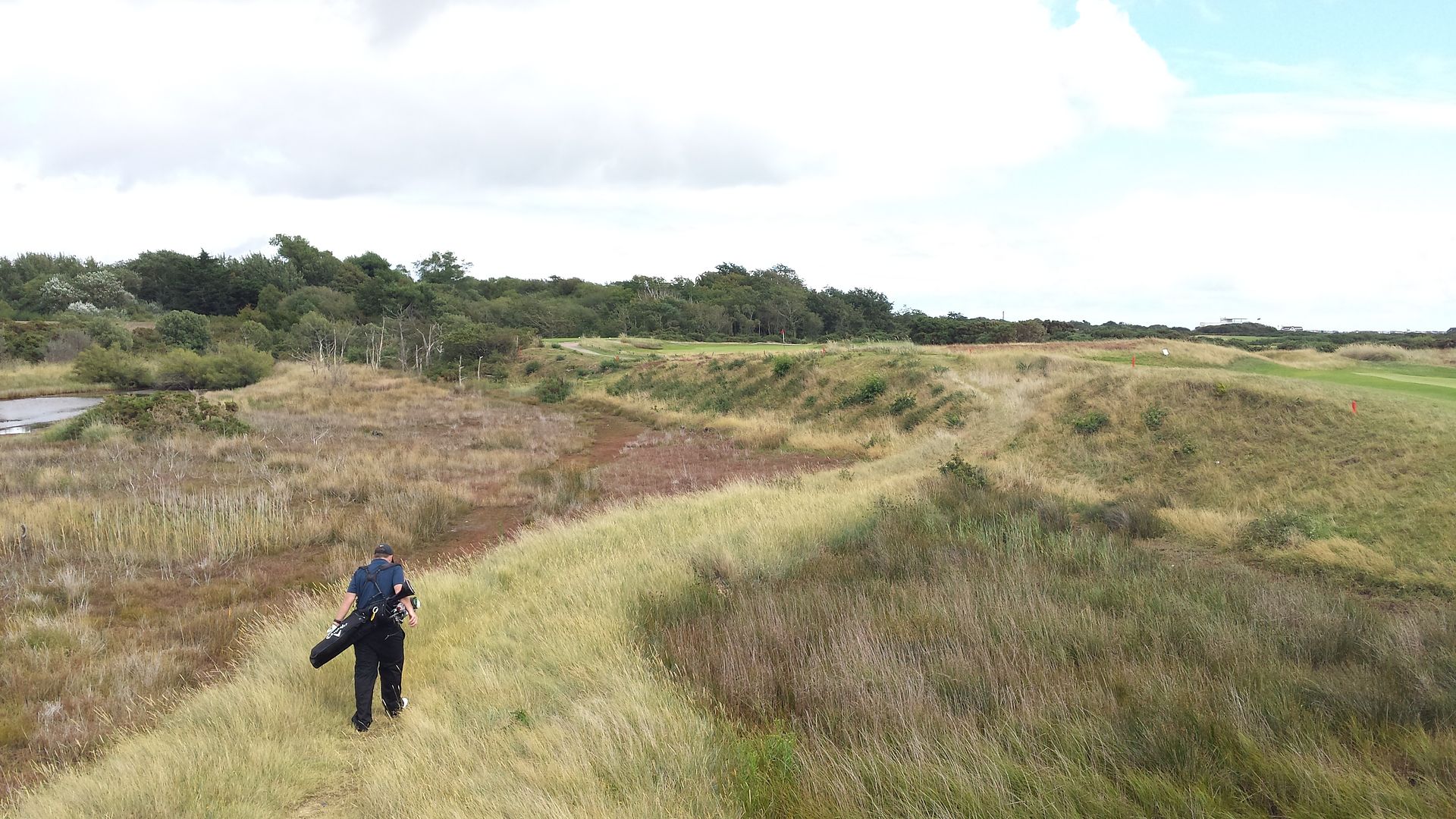
The green;
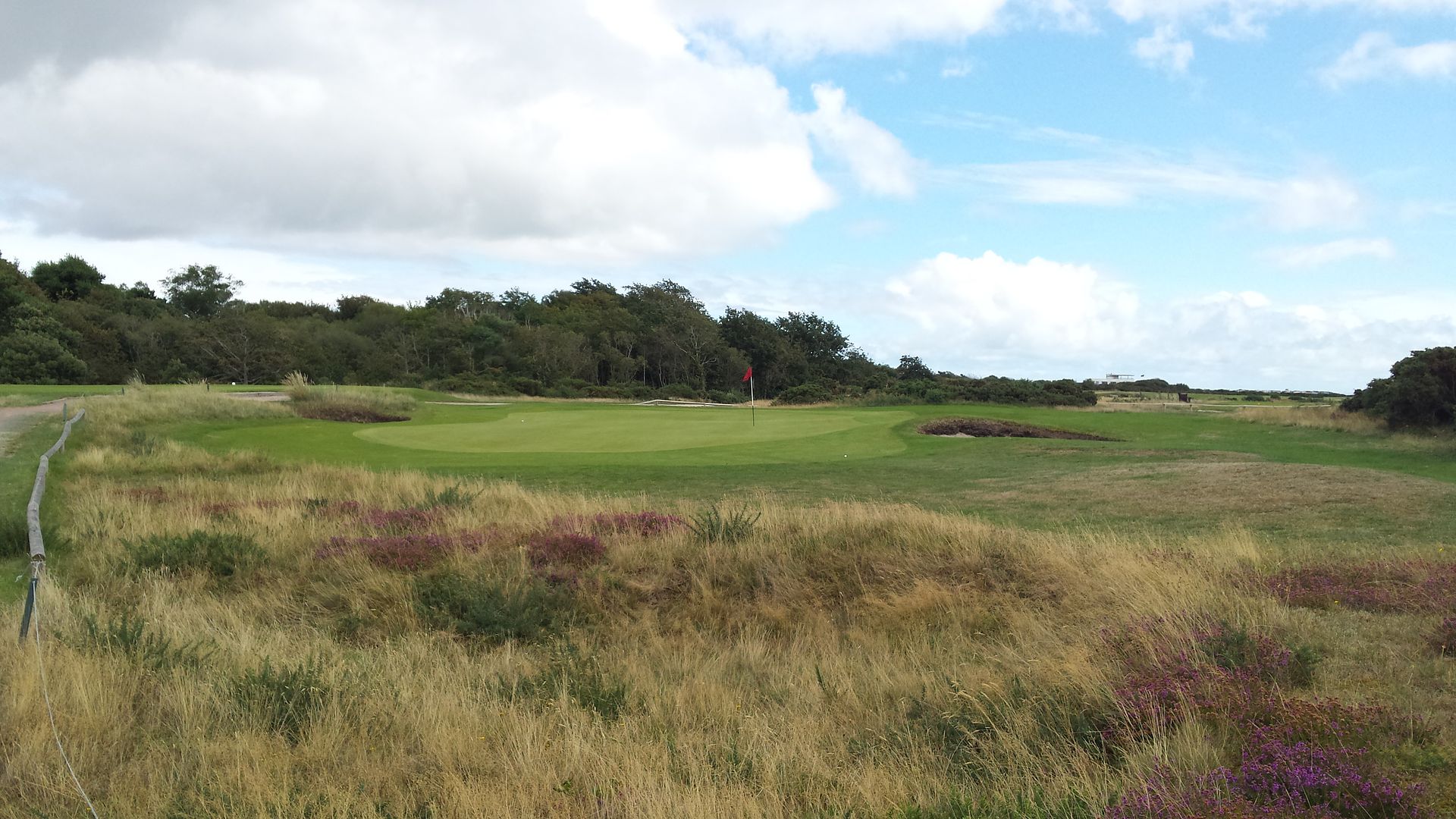
15 -A long par 4 which sees us tee off over the water inlet which also crosses the 6
th and return in earnest to the flatter land. Though the use of a sneaky hidden two tier fairway provides plenty of interest. Another gully like green site.
Tee;

Approach;
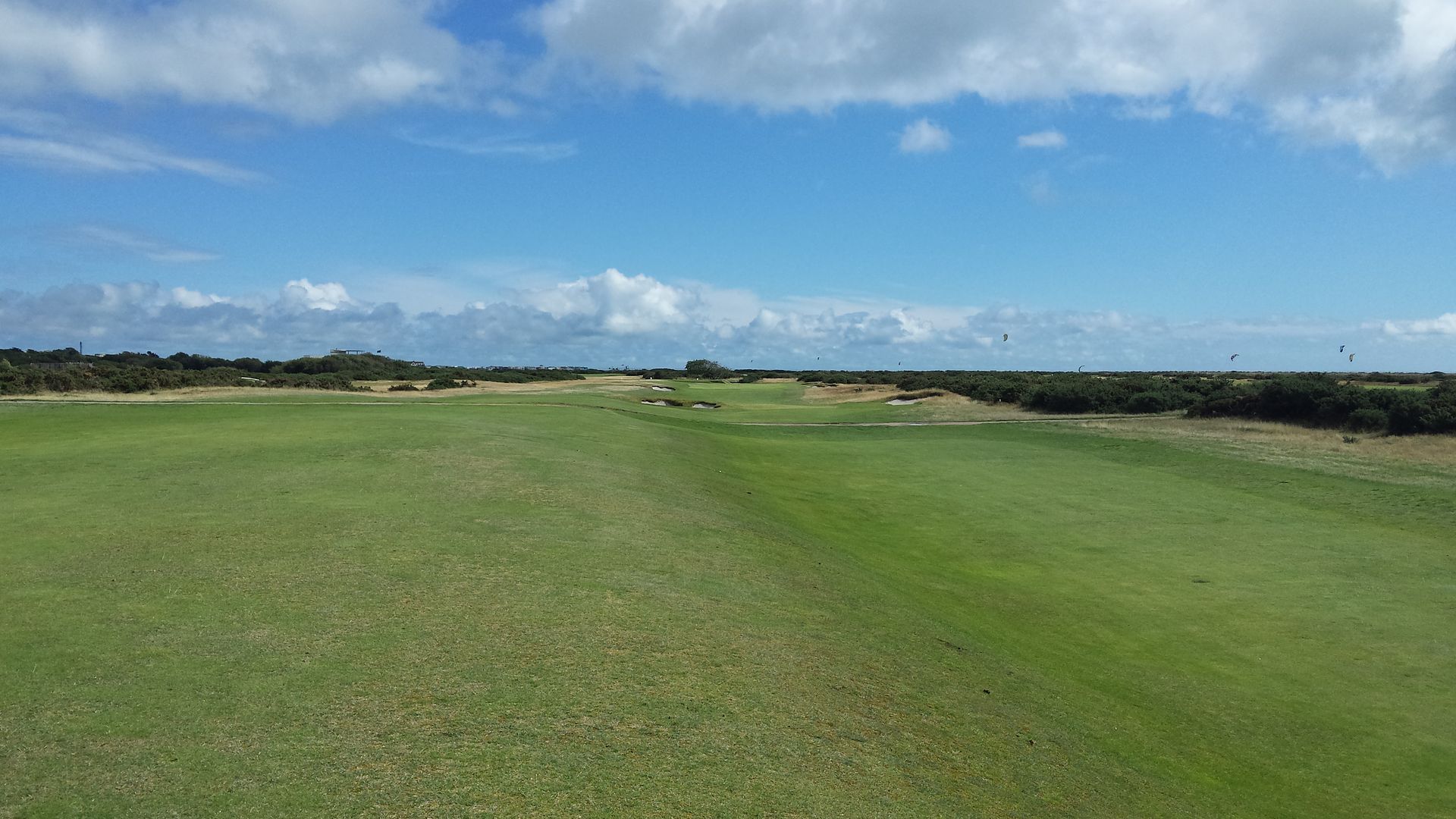
16 -The hole that both replaced 14A and was replaced by 14A on our visit. A nice looking par 3 with an interesting green but on first glance I was glad to be playing 14A.
17 -The 17
th tees off along the edge of the large lake that leads back to the clubhouse which is attractively framed over the water. Another solid long 4 that can form part of a tough closing run if the winds decides to ignore its usual prevailing self.
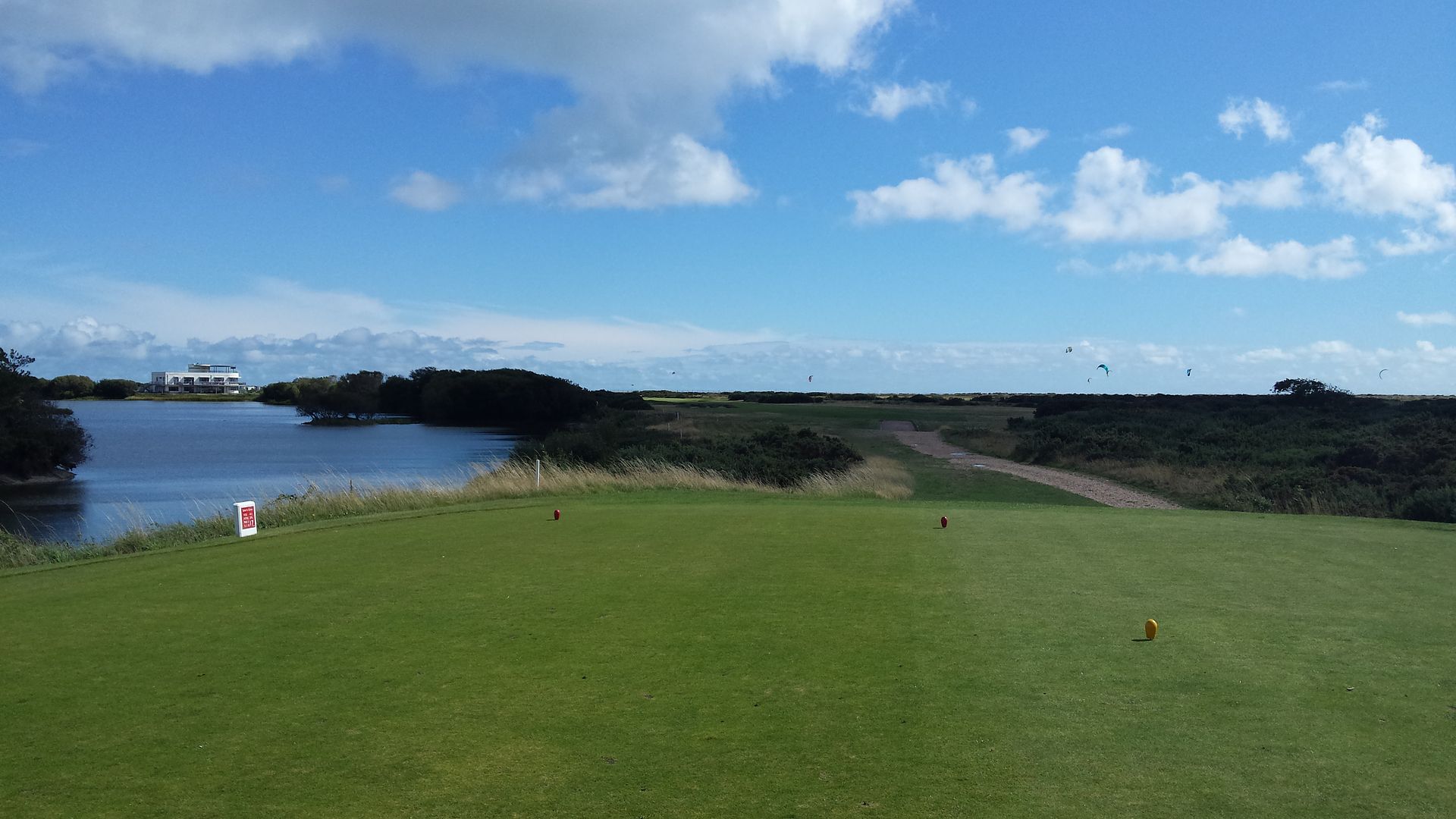
18 -As with 17, 18 is a stout 4 that continues to see the course run out of steam a little. That said another interesting greens make the hole far from drab.
I was really impressed by Hayling. It doesn’t attract too much interest from the vast majority but I’d say it was well worth a visit.
My visit to Hayling also see my admiration of Tom Simpson continue to rise. As far as I can tell he really was exceptionally good, it seems such a pity so little of his work remains unchanged.